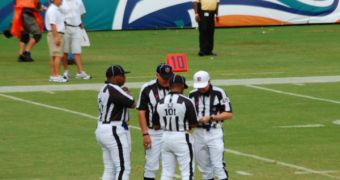American Football and the NFL could benefit from a new invention devised by Carnegie Mellon computer engineering professor Dr. Priya Narasimhan, which could reduce the number of human errors in football games considerably. Basically, the new system consists of a GPS receiver and a bunch of sensors inserted in the ball, which can tell when it hit the ground, who touched it and whether it was out or not.
She also created “data gloves” outfitted with 15 sensors each, that can detect when a player catches the ball, how he holds it and how he throws it. This could prove to be very valuable in assessing the skill of one player, and could be used by scouts when analyzing a player's performance on the field. The gloves connect wirelessly to a computer, but the main downside of the prototype is that it works over limited distance, of about 30 feet (10 meters), and that it only transmits data once every second.
The researcher hopes to be able to gather more funds to complete her design, which she says could prove invaluable on the field in the future. Her plans include the development and implementation of sensors that can transmit data back about four times per second, and have a much higher range. By adding GPS “markers” on the side of the field, they could work as relay stations for the signal, while increasing the accuracy of the whole system.
"You'd never want to replace the human referees because they make these calls based on years of experience, and no technology can replace that. But in addition to the instant replay, if you had a supplementary system that said this is exactly where the ball landed and where the player stopped with it, you could make these kinds of calls accurately," Narasimhan explains.
The scientist added that she fell in love with football after she came to the United States, around seven years ago, and that she was so appalled at some of the referees' decisions, that she decided to do something about it. Hopefully, her system will prove its worth, and investors will put real money in its development.

 14 DAY TRIAL //
14 DAY TRIAL //